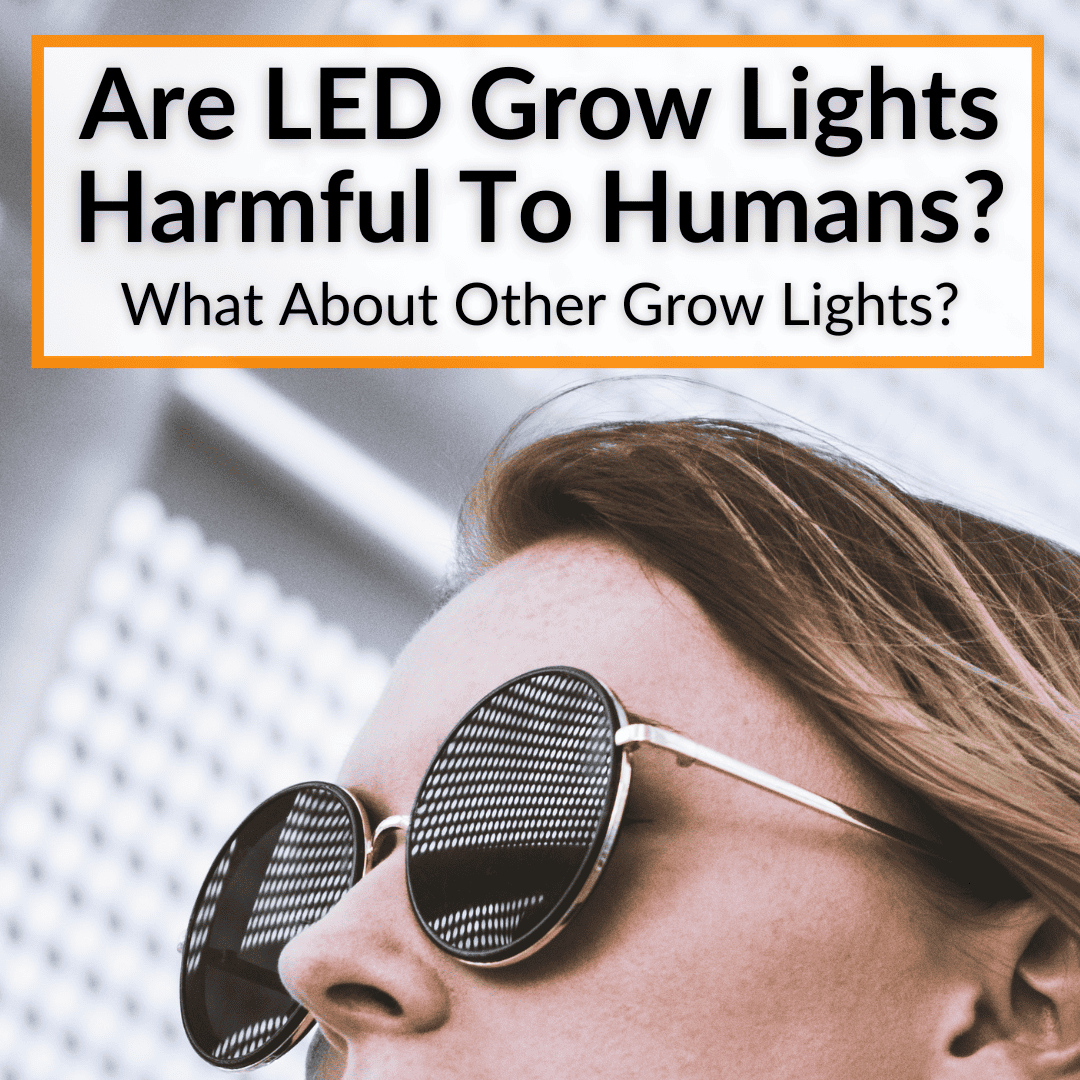 Light-emitting diodes have changed a lot since their inception in the 1960s.
Light-emitting diodes have changed a lot since their inception in the 1960s.
Most importantly, they have become cheaper, more energy-efficient, and more powerful.
But the increase in power has brought with it an increase in concern for its effect on human health.
You want to be aware of the concerns so you can minimize any potential risk.
Are LED grow lights harmful to humans, then?
It’s not a simple ‘yes’ or ‘no’ answer.
Keep reading to learn whether LED grow lights can cause us harm, how they can cause us harm, and how you can protect yourself.
Contents
Are LED Grow Lights Harmful To Humans?
LED grow lights are not generally harmful to humans. Reputable manufacturers design them to be safe. But there is still the potential for harm due to long-term exposure.
Some LED grow lights emit UV radiation, which can cause damage to your eyes and skin, if you spend too much time under it. That is why you should take extra precautions to protect your eyes and skin, whenever you will be in your grow room for more than a few minutes.
And it is not just LED light. Other types of grow lights also emit UV light, to varying degrees. You’ll want to know what precautions to take to make sure you safeguard your future health. We will cover that below.
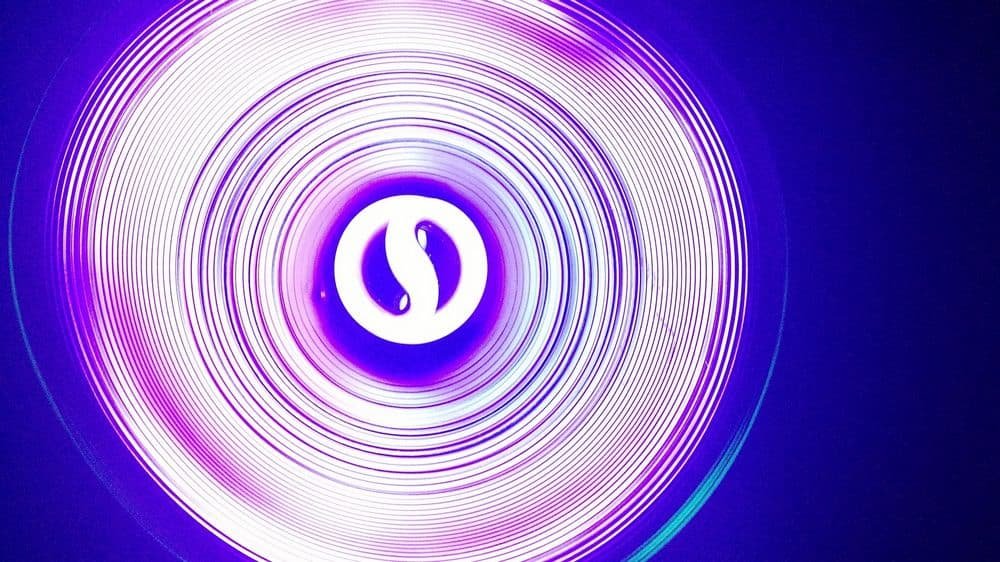
First I want to make sure you are not feeling too alarmed. While there is the potential for LED grow lights to have a negative effect on your health, if you use them correctly, there is minimal cause for concern.
But with LEDs becoming more powerful over the years, it is definitely a good idea to heed the warnings and protect yourself accordingly, just to be safe.
How To Protect Yourself From Harmful Effects Of LED Grow Lights
The two main areas of concern are the eyes and the skin. Standard LED lights, like those used to light homes and offices, may emit some UV rays, but the amount is negligible.
LED grow lights are a slightly different beast. Many are designed specifically to emit more UV light, because it aids in photosynthesis and increases the potency of buds.
When you use LED grow lights to give the correct amount of UV to your plants, they will grow healthier. It also helps increase the root mass and improves the taste and potency of the buds.
However, overexposure to UV radiation can lead to tissue damage in both plants and human skin, and it can potentially damage your eyes. That is why you should always take steps to protect your skin and eyes.
How To Protect Your Eyes
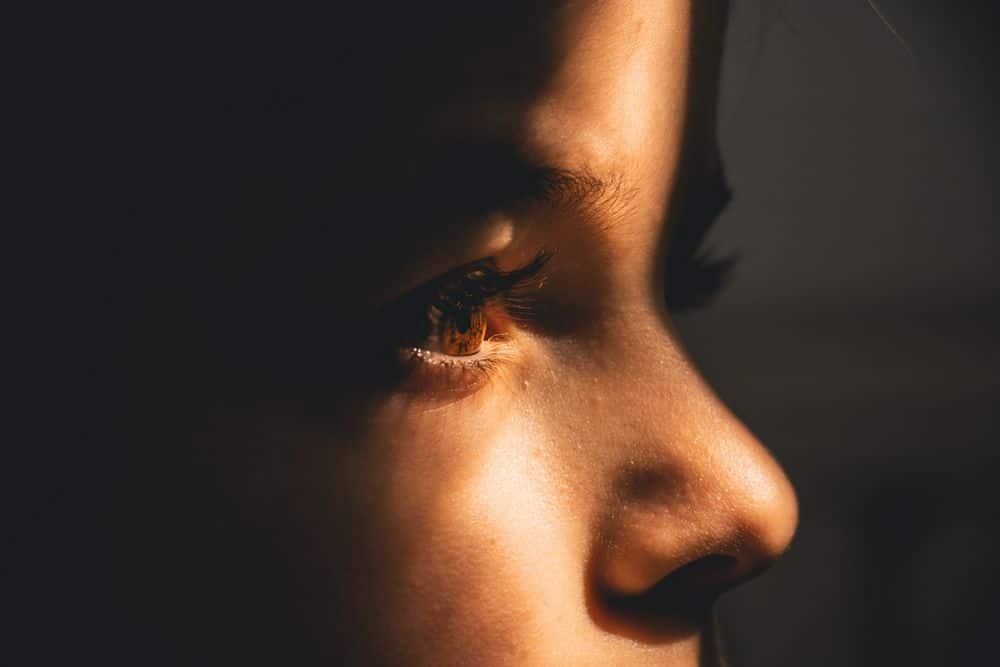
The invisible blue and red light produced by LED grow lights (i.e. ultraviolet and infrared) is not friendly to the human eye. You should avoid prolonged or close exposure.
Most modern LED grow lamps emit white light containing all colors of the spectrum to mimic sunlight as much as possible.
Many add in extra red and blue, because cannabis plants like additional blue light during the vegetative period and more red light once the flowering stage begins.
Some even add in near red and far blue. Those are also known as infrared and ultraviolet. Overexposure to these can cause headaches and migraines in the short term and may have longer-term ill effects too.
A solid pair of specially designed grow room glasses can help protect your eyes from any harmful rays and safeguard you from future eye problems. You want glasses designed for the specific spectrum of your light.
How To Protect Your Skin
There are different types of UV rays (UVA, UVB, and UVC). LED grow lights usually only emit UVA, and sometimes (very rarely) UVB.
UVB LED diodes are expensive, which is why no fixtures currently have them (that I know of). Some add fluorescent UVB tubes to the fixtures to provide UVB. UVA diodes are more common. Many lights have them these days.
Overexposure to either of these types does have the potential to damage your skin, especially UVB, so it is a good idea to protect yourself to prevent any future health problems.
UVB rays are the bigger problem, as mentioned. They are essential for human health, since they help us produce vitamin D. But too much UVB is not a good thing. It is what causes sunburn, skin cancer, and also damages our eyes.
Do grow lights give you vitamin D, then? They can, if they emit UVB wavelengths. But there are obviously better ways to get the vitamin D you need.

Overexposure to UVA rays can also have a negative effect on your health, but the effects are much less pronounced. Nevertheless, you should control exposure to both forms, to avoid health issues.
Most notably, there is a potential for excessive exposure to lead to skin cancer over time.
There is no need to apply sunblock when tending to your next batch of plants, but it is a good idea to keep as much of your skin covered as possible to help minimize any long-term risk.
And wear protective glasses, if nothing else. Your eyes are the most vulnerable part of your body when it comes to light.
Are Grow Lights Harmful To Humans Other Than LEDs?
Now let’s take a look at other common types of grow lights and see if they are harmful to us.
HID Grow Lights
There are three main types of high-intensity discharge (HID) lights commonly used by cannabis growers: ceramic metal halide (CMH), metal halide (MH) and high-pressure sodium (HPS).
CMH lights produce a white light very similar to the sun, MH lights produce a more bluish white light, and HPS lights emit orangish white light. Growers tend to see MH lights as being more suitable for the vegetative phase and HPS lights as being better for encouraging flowering.
But CMH lights are easily the best among all the HID lighting types for growing plants. When you compare a sunlight vs grow light spectrum, only certain LED grow lights can come as close to CMH lights for matching natural sunlight.
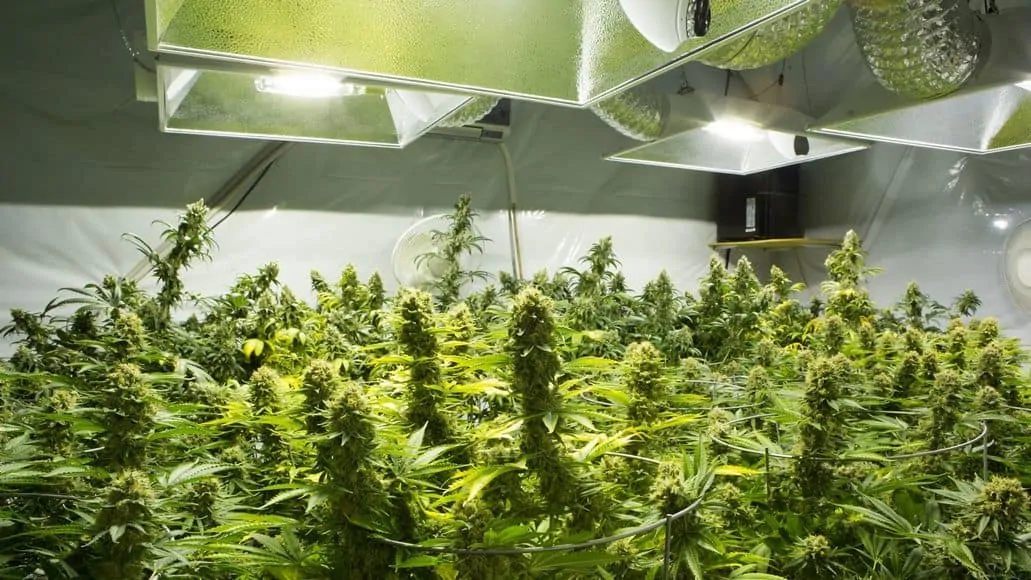
Many growers swear by HID lighting and consider it the best for producing the biggest yields. However, these high-intensity lights also emit higher levels of UV radiation than LED grow lights.
You should take the necessary precautions to protect yourself from these potentially negative effects in the same way you would for an LED grow light: wear eye protection and keep your skin covered.
Fluorescent Grow Lights
Fluorescent grow lights work by converting electrical energy into light by passing currents through mercury vapor to create radiation. For grow lights, there are two different styles of fluorescent light: fluorescent tubes and CFLs (compact fluorescent lights). The CFLs are larger than regular fluorescent tubes and produce higher wattages and a broader spectrum of light.
While fluorescent grow lights produce less UV radiation than HID lights, they do come with another potential health hazard quite literally built into them: mercury.
Mercury and most of its compounds are extremely toxic and must be handled with care. If the bulb breaks accidentally, the mercury will get released into the air, potentially causing serious health problems.
Mercury can be absorbed through the skin, and mercury vapor can be inhaled, especially if the spillage occurs in a small area, such as a grow tent. Ensure you clean up any inadvertent accidents correctly and quickly.
Grow Lights Harmful To Humans: Related Questions
Next, we will answer two common questions we get related to gerow lights and their effects on us humans. If you have any additional questions, please feel free to ask them in the comments below.
Do grow lights work as well as sunlight?
While photosynthesis naturally evolved as a reaction to sunlight, the improvement of indoor grow lights in recent years has shown that indoor grow lights can be as, if not more, effective than the sun.
Are LED grow lights safe for human eyes?
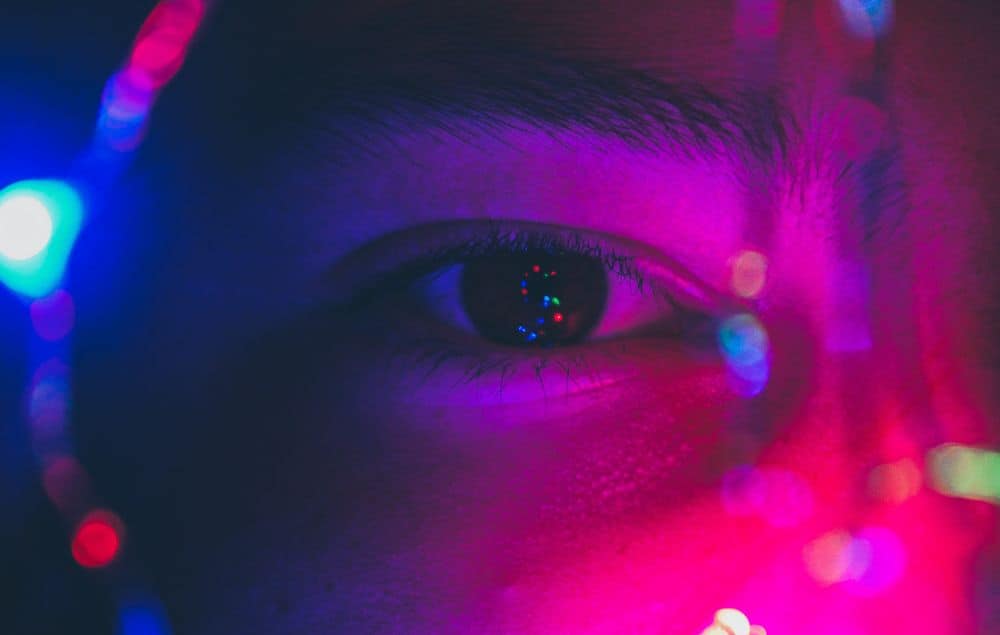
Modern LED lights are emit a concentrated light and do have the potential to damage your eyes. Be careful to not look directly into your LED grow lights and wear sunglasses when in your grow space. LED grow lights can damage your eyes, if you are not careful.
Are LED grow lights harmful to pets?
In general, the same goes for pets as for humans, expect most pets have a natural protective cover over their skin (fur, etc.). LED grow lights are not especially dangerous for your pets, but your pets may pose a danger to your lights, or your entire grow. And some pets, like reptiles, actually need UV light.
Are LED Grow Lights Safe For Humans: Final Thoughts
LED grow lights are not generally harmful to humans. They are designed to be safe. However, they do present some potential dangers to us, especially when we are exposed to them for extended periods of time.
The biggest danger is to our eyes, which is why you should always wear eye protection when entering a grow room with running lights. Our skin can also suffer, so it is a good idea to cover it up as much as possible, whenever you will be spending more than a few minutes underneath the grow lights.
Leave a Reply